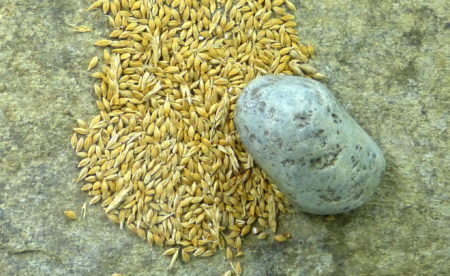Prehistoric women had stronger arms than today’s elite rowers
Researchers from the University of Cambridge have discovered that our female ancestors were much stronger than had previously been assumed.
The team used CT scans to analyse the humerus (upper arm) and tibia (lower leg) bones of women from the Neolithic era to the Middle Ages. They were compared to scans from living women with a range of activity levels, from those with sedentary lifestyles to elite athletes.
Dr Alison Macintosh, lead author of the study, explained, “It can be easy to forget that bone is a living tissue, one that responds to the rigours we put our bodies through. Physical impact and muscle activity both put strain on bone, called loading. The bone reacts by changing in shape, curvature, thickness and density over time to accommodate repeated strain.”
“By analysing the bone characteristics of living people whose regular physical exertion is known, and comparing them to the characteristics of ancient bones, we can start to interpret the kinds of labour our ancestors were performing in prehistory.”
The humerus bones of Neolithic women were found to be 11-16 per cent stronger for their size than that of elite rowers, and nearly 30 per cent stronger than that of the average modern woman who took part in the study. Their tibia bone strength was similar to that of the elite rowers, suggesting that Neolithic women regularly performed tasks with a focus on the upper body.
This trend continued into the Bronze Age, with women from this period having arm bones 9-13 per cent stronger than those of the modern rowers, while their leg bones were around 12 per cent weaker.
One theory to explain this upper body strength is that many women would have spent hours each day grinding grain to make flour. “We can’t say specifically what behaviours were causing the bone loading we found. However, a major activity in early agriculture was converting grain into flour, and this was likely performed by women,” explained Macintosh.

In early agriculture, people would have used grinding stones like this to pulverise grains into flour by hand. Credit Wolfgang Sauber
“For millennia, grain would have been ground by hand between two large stones called a saddle quern. In the few remaining societies that still use saddle querns, women grind grain for up to five hours a day. The repetitive arm action of grinding these stones together for hours may have loaded women’s arm bones in a similar way to the laborious back-and-forth motion of rowing.”
It is unlikely that this was the only task that contributed to these women’s strength. Before the development of more modern farming tools and methods, agriculture was much more labour intensive.
“Prior to the invention of the plough, subsistence farming involved manually planting, tilling and harvesting all crops,” said Macintosh. “Women were also likely to have been fetching food and water for domestic livestock, processing milk and meat, and converting hides and wool into textiles. The variation in bone loading found in prehistoric women suggests that a wide range of behaviours were occurring during early agriculture. In fact, we believe it may be the wide variety of women’s work that in part makes it so difficult to identify signatures of any one specific behaviour from their bones.”
This study has helped shed more light on the lifestyles of our ancestors and the advent of agriculture. Dr Jay Stock, senior study author added, “Our findings suggest that for thousands of years, the rigorous manual labour of women was a crucial driver of early farming economies. The research demonstrates what we can learn about the human past through better understanding of human variation today.”
Main image: Credit Katie Chan
For more history facts and news, pick up your copy of issue 106 from all good retailers or from our website now. If you have a tablet or smartphone, you can also download the digital version onto your iOS or Android device. To make sure you never miss an issue of How It Works magazine, subscribe today!




